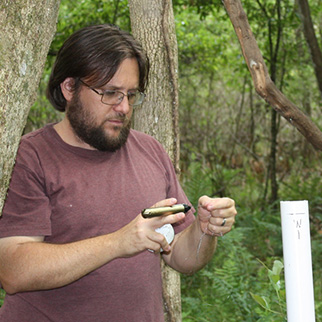Explore Green Jobs
Hydrologist
Clean water is essential to a thriving forest, the wildlife that resides within it and the surrounding communities. Forestry organizations work hard to protect the natural resources that contribute to the forest. In order to do so, the company may employ a Forestry Hydrologist.
The primary responsibility of the Forestry Hydrologist is to monitor and improve water quality and quantity within the working forest and its surrounding environment. Forestry Hydrologists conduct research to analyze surface and underground waters influenced by forestry operations. From their research, hydrologists communicate findings and information to help the forestry organization preserve and protect water resources.
This position may also be known as a Groundwater Consultant or Hydrogeologist.



